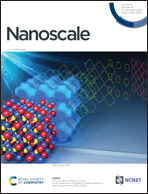Development of GLUT1-targeting alkyl glucoside-modified dihydroartemisinin liposomes for cancer therapy†
Abstract
The antitumor activity of artemisinin derivatives has attracted much attention. However, lack of tumor targeting limits the anti-tumor activity of artemisinin derivatives. It is reported that tumor cells acquire energy through the glycolysis pathway. To meet their elevated glucose requirements, high expressions of glucose transporters (GLUTs) are observed in many malignant cells. On this basis, novel alkyl glycoside-modified dihydroartemisinin liposomes were successfully prepared with GLUT1 as the target and the glucose segment of an alkyl glycoside as the targeting head on the surface of liposomes. The particle size of the liposomes was 100.67 ± 1.25 nm, zeta potential was −22.93 ± 0.92 mV and encapsulation efficiency was 75.28 ± 0.73%, meanwhile the liposomes had good stability. In vitro targeting of liposomes was evaluated by fluorescence microscopy and flow cytometry. Compared with human L02 hepatocyte cells, the liposomes showed better targeting ability to human liver carcinoma cells HepG2 with the help of the glucose segment modified on the liposomes. In vivo targeting evaluation also showed that the tumor targeting of alkyl glycoside-modified liposomes was significantly improved, as well as the anti-tumor activity. These findings provide a research and theoretical basis for the development of artemisinin derivatives and other drug targeted antitumor nano-agents.



 Please wait while we load your content...
Please wait while we load your content...